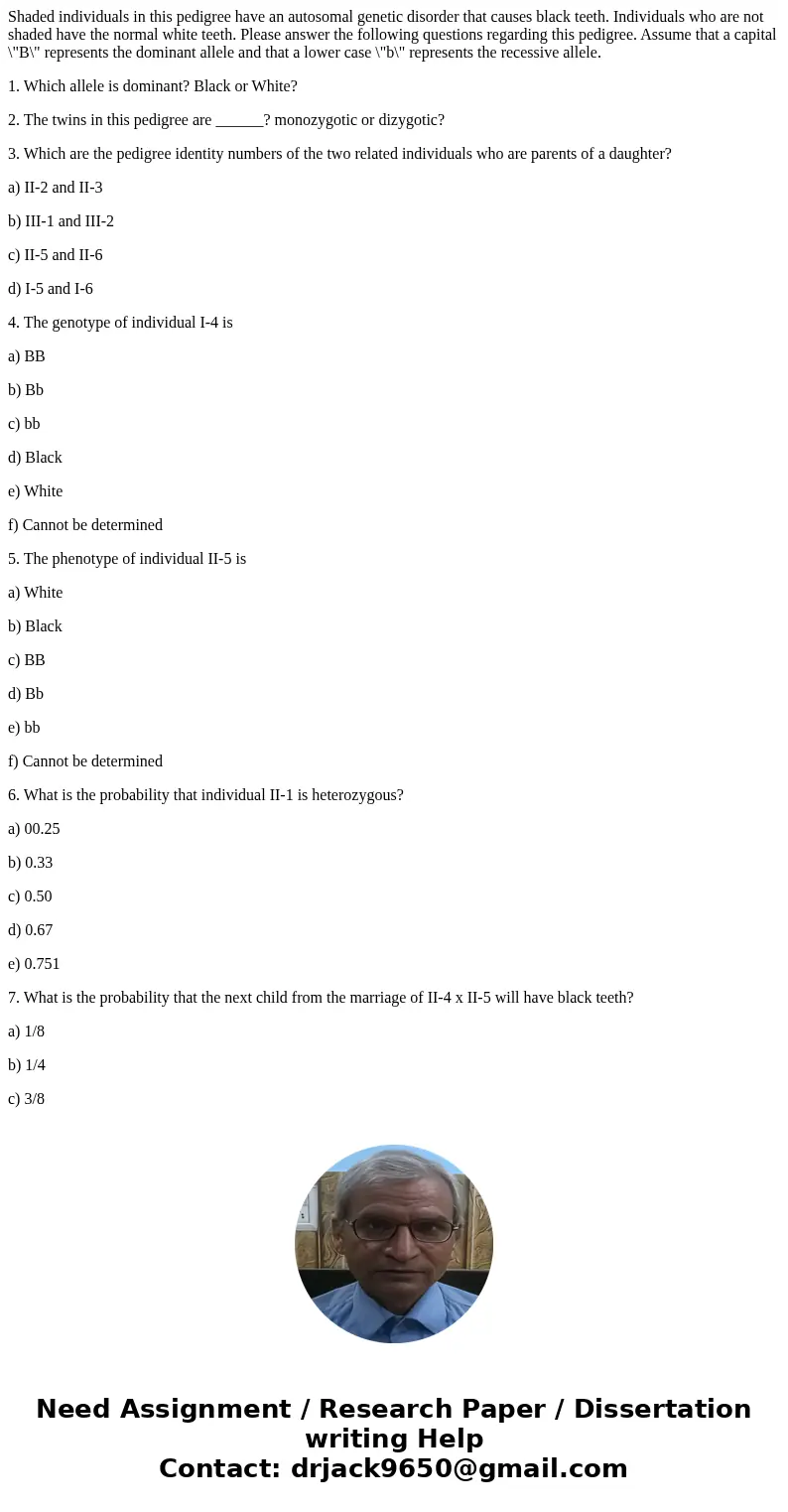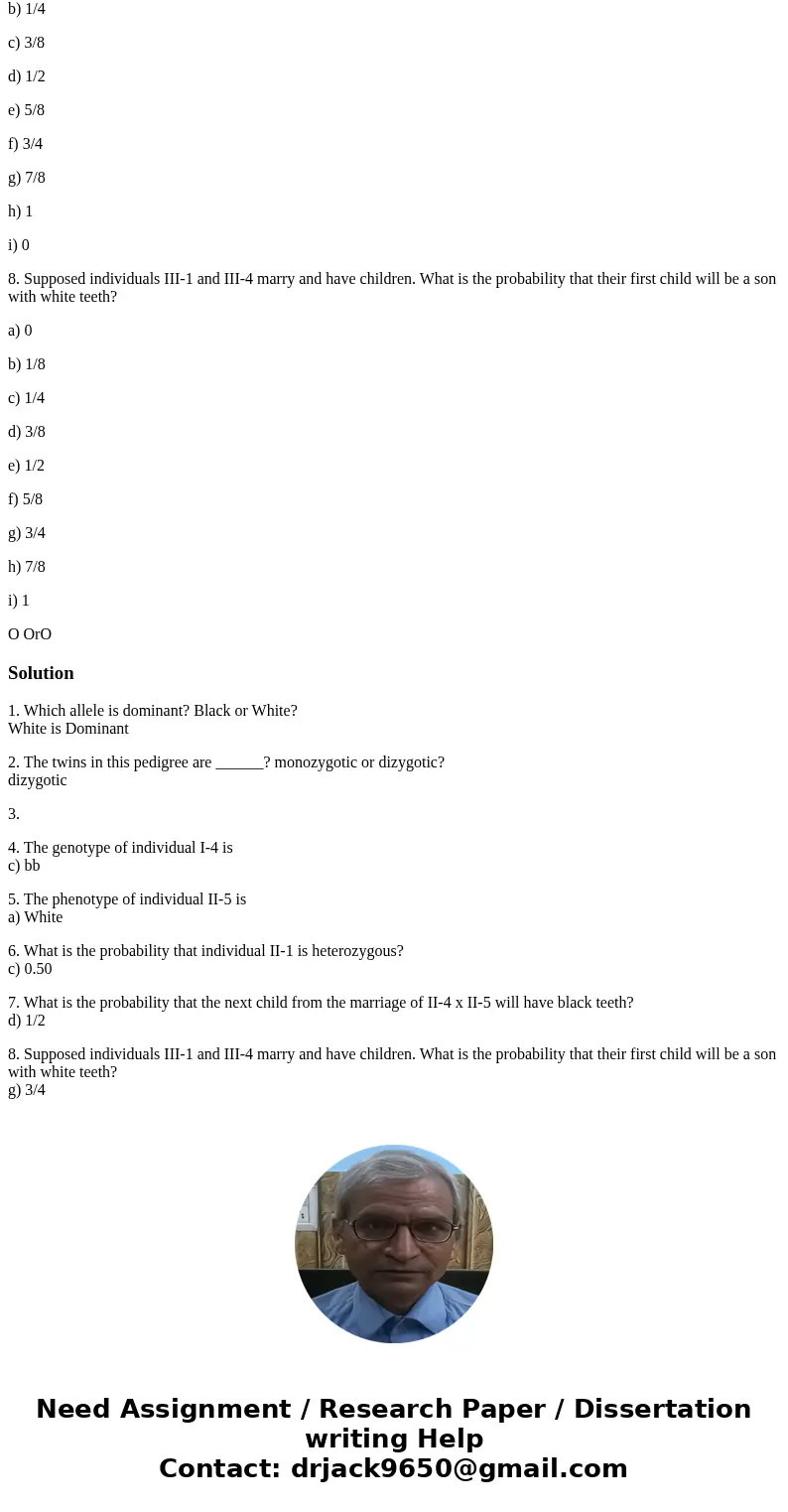Shaded individuals in this pedigree have an autosomal geneti
Shaded individuals in this pedigree have an autosomal genetic disorder that causes black teeth. Individuals who are not shaded have the normal white teeth. Please answer the following questions regarding this pedigree. Assume that a capital \"B\" represents the dominant allele and that a lower case \"b\" represents the recessive allele.
1. Which allele is dominant? Black or White?
2. The twins in this pedigree are ______? monozygotic or dizygotic?
3. Which are the pedigree identity numbers of the two related individuals who are parents of a daughter?
a) II-2 and II-3
b) III-1 and III-2
c) II-5 and II-6
d) I-5 and I-6
4. The genotype of individual I-4 is
a) BB
b) Bb
c) bb
d) Black
e) White
f) Cannot be determined
5. The phenotype of individual II-5 is
a) White
b) Black
c) BB
d) Bb
e) bb
f) Cannot be determined
6. What is the probability that individual II-1 is heterozygous?
a) 00.25
b) 0.33
c) 0.50
d) 0.67
e) 0.751
7. What is the probability that the next child from the marriage of II-4 x II-5 will have black teeth?
a) 1/8
b) 1/4
c) 3/8
d) 1/2
e) 5/8
f) 3/4
g) 7/8
h) 1
i) 0
8. Supposed individuals III-1 and III-4 marry and have children. What is the probability that their first child will be a son with white teeth?
a) 0
b) 1/8
c) 1/4
d) 3/8
e) 1/2
f) 5/8
g) 3/4
h) 7/8
i) 1
O OrOSolution
1. Which allele is dominant? Black or White?
White is Dominant
2. The twins in this pedigree are ______? monozygotic or dizygotic?
dizygotic
3.
4. The genotype of individual I-4 is
c) bb
5. The phenotype of individual II-5 is
a) White
6. What is the probability that individual II-1 is heterozygous?
c) 0.50
7. What is the probability that the next child from the marriage of II-4 x II-5 will have black teeth?
d) 1/2
8. Supposed individuals III-1 and III-4 marry and have children. What is the probability that their first child will be a son with white teeth?
g) 3/4


 Homework Sourse
Homework Sourse